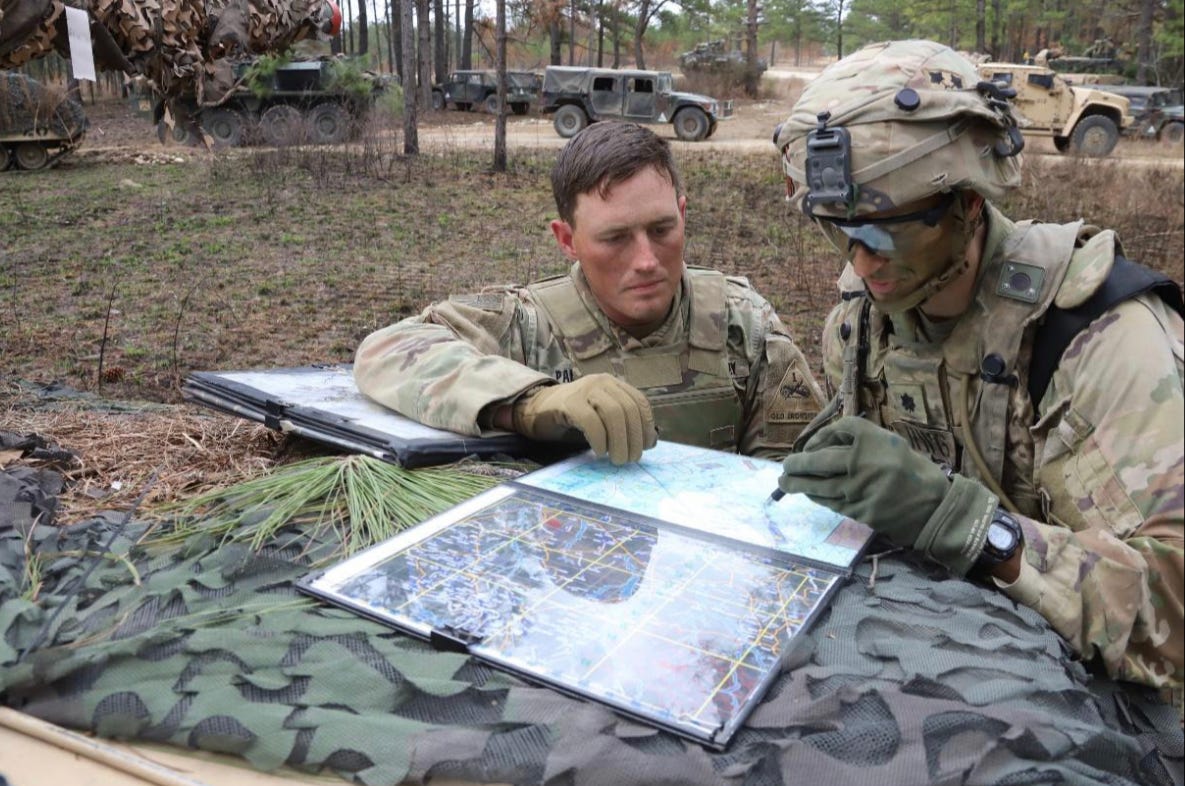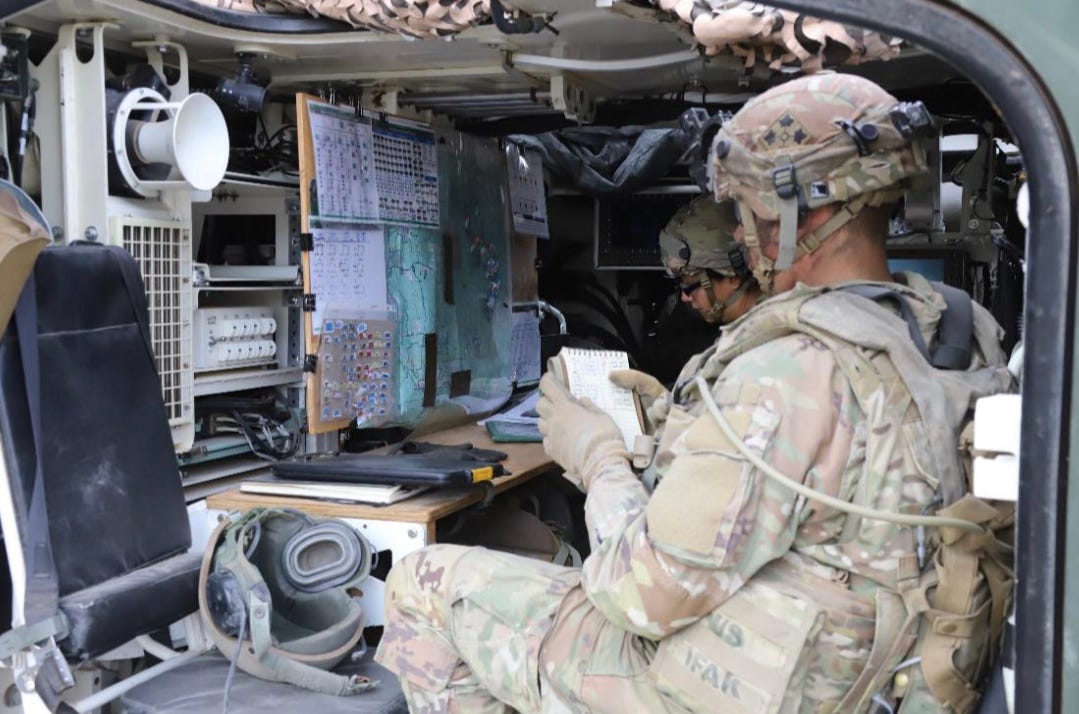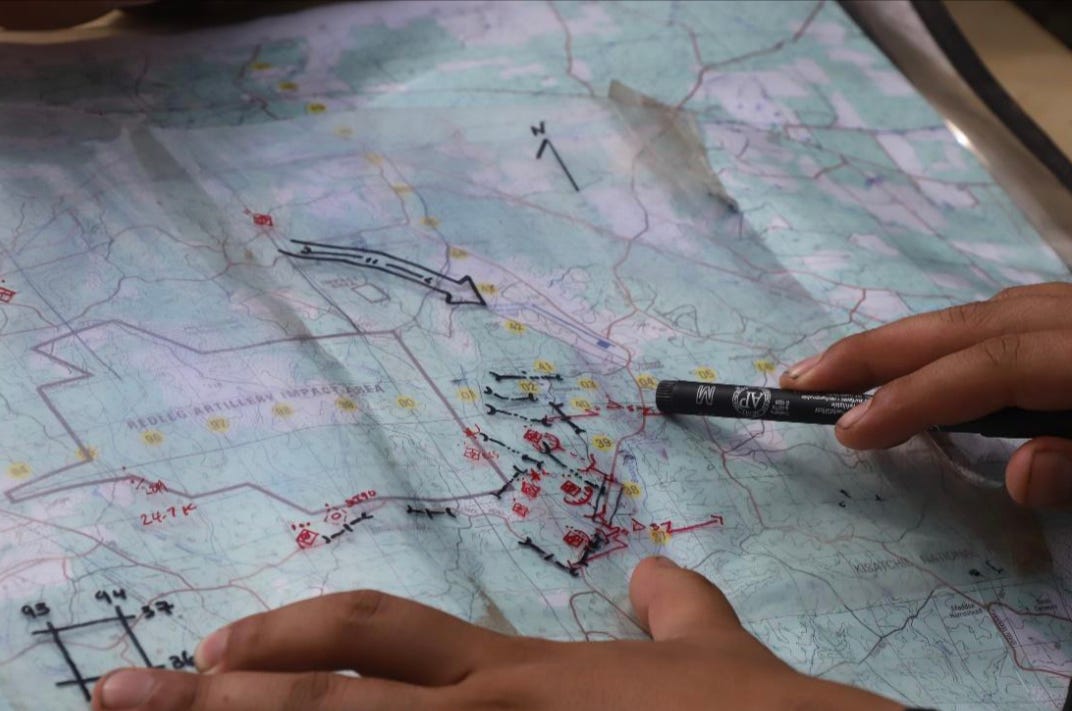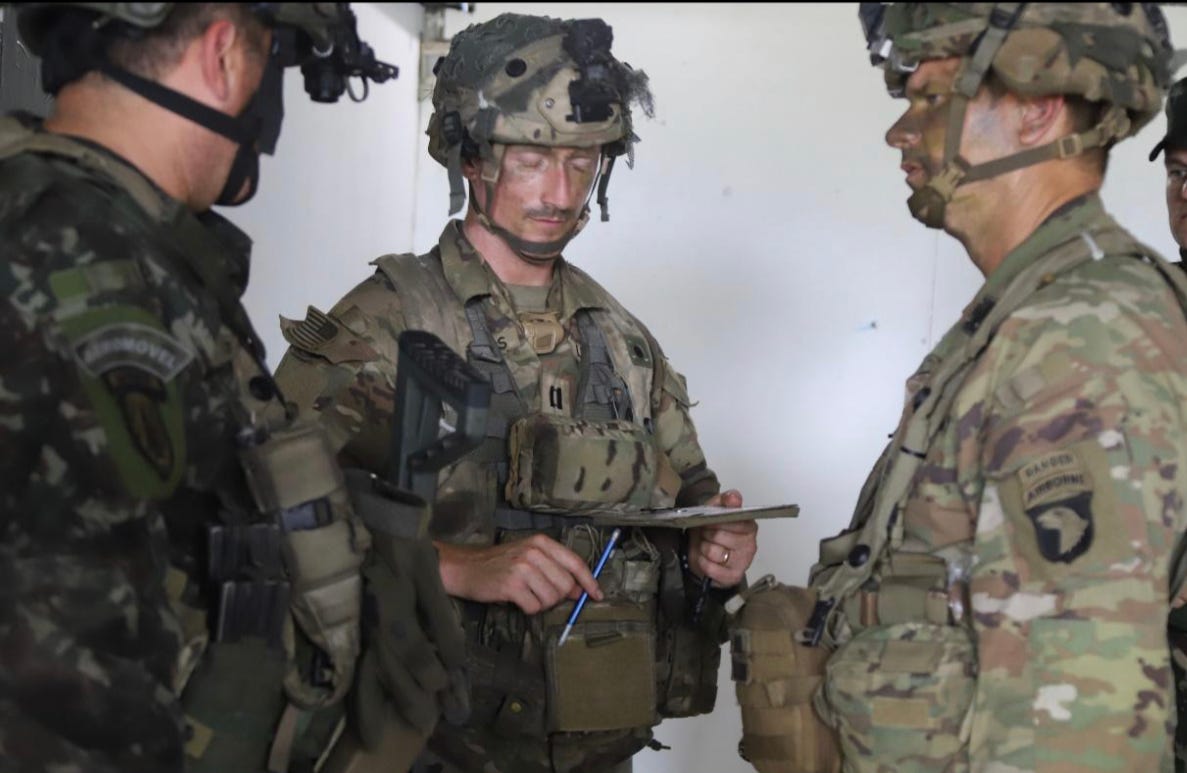Note from Lethal Minds
The following article was submitted to Lethal Minds by LTC Jeff Farmer (US Army) following his experiences commanding 1st Battalion, 506th Infantry Regiment, 101st Airborne Division during their most recent Joint Readiness Training Center rotation at Fort Polk LA. LTC Farmer’s after action report emphasizes the need for a commander to extend their presence across their command, and how leveraging command and control effectively allows a commander to dedicate focus and energy to their whole team, not merely a single part of their organization.
Be informed, be prepared, be Lethal.
Dedicated to those who serve, those who have served, and those who paid the final price for their country.
I was guilty. My first six months in battalion command I found myself forward with two rifle companies and the tactical command post conducting an air assault during the hours of limited visibility with over 400 of my best friends. Our mission: attack to seize key terrain in the vicinity of Objective Galaxy in order to establish a lodgment for the brigade. This lodgment would then facilitat
e the brigade’s effort to begin its combat power generation in the defense of Arnland. I fancied myself a commander’s commander and was determined to prove this theory in the flesh during our brigade’s premier training event focused on large scale combat operations (LSCO) in the infamous Fullerton Training Area, aka “The Box,” at the Joint Readiness Training Center (JRTC) at Fort Polk, Louisiana.
Commanders belong forward, ensuring that the unit’s subordinate formations have a shared understanding of their intent and providing the leadership and direction required to gain and maintain the operational tempo necessary to complete the mission. However, being forward with my troopers created a void in my visualization of future operations with the battalion staff, which in return created slow and untimely mission orders, minimal operational graphics to the companies, and poor transition management of the organization. I quickly learned that placing oneself at the point of friction does not obviate a commander’s responsibility to ensure their staff also fully understands their visualization of the fight, which in doing so enables the appropriate and timely planning, orders processes, and current operations systems that sustain a battalion and propel it to success. Ultimately, any commander should be able to leave their staff and conduct battlefield circulation with well-defined decision points and triggers that enable the command to conduct timely command and control (C2) of its subordinate elements.
Battalion commanders cannot and should not abandon the battalion staff at the main command post (MCP) or the tactical command post (TAC) without communicating a shared visualization and intent. Programming the required training objectives into the staff’s individual and collective train-up is tantamount to squad, platoon, and company level proficiency training to find, fix, and destroy the enemy. Reciprocally, the battalion staff owes the battalion commander constant refinement of its analyses across all appropriate warfighting functions to facilitate timely and accurate decision making for the battalion commander. Often, these analyses can result in an appropriate re-allocation of resources/assets or even a task reorganization based on risk or potential opportunities to exploit the enemy or gain momentum.
A former brigade commander of mine defined two types of decision points: 1) allocation/reallocation of combat power to exploit an enemy vulnerability, and 2) allocation/reallocation of combat power to mitigate a friendly weakness. Both require brigade or battalion commander level approval. These should not be confused with triggers. Triggers are generally an action that the staff has planned and gained prior approval from a commander for deliberate action once the established conditions are present. These triggers can be the difference in a delegated authority, executing timely indirect fires into an engagement area or committing a reserve force to exploit a seam in the enemy’s flank. All these planning processes to include the shared understanding of a common operating picture (COP), are critical to the science of command and control in a LSCO environment.
Much like my time as an infantry battalion commander, as an infantry task force senior in the Operations Group at the JRTC, I have observed many of my contemporaries focused on the same mantra as I entered “the Box,” ride or die with the company commanders while paying little attention to their staff. This often results in the battalion staff and C2 nodes struggling to accurately battle track friendly forward positions and contact with enemy elements, or clear ground and air to employ indirect fires assets in an accurate and timely manner. Additionally, the planning of transitions and future operations often fall short.
Battalion commanders can influence and shape the appropriate application of violence of action and enable maneuver of subordinate units. This is largely accomplished by training battalion staffs to establish and maintain an effective common operating picture, enforcing a transition from conceptual to detailed planning (operational graphics), and updating running staff estimates while adhering to a battle rhythm (doing routine things routinely). An often overlooked and underrated approach is through good old fashioned adjacent unit coordination, battalion commander to battalion commander and staff primary to staff primary. All these components are relatively simple, but require repetitions, discipline, and redundancy through systems and trained members of the team.
Common Operational Picture (COP). Army Training Publication 6-0.5, Command Post Organization and Operations, defines a COP as, “the end product of knowledge and information activities, running estimates, and battle tracking. It is the operational picture tailored to the commander’s requirements, based on common data and shared information, and facilitates collaborative planning and the achievement of situational understanding.” Additionally, this end product should be a single display of relevant data that is shared with more than one other command. In producing and maintaining a battalion COP the battle captain, or COP manager, must not merely illustrate operational graphics from the battalion operations officer’s concept sketch that was constructed during the military decision-making process (MDMP), but this individual(s) must constantly update the operational graphics with bottom-up refinement from company commanders, the scout platoon, battalion intelligence officer, and all applicable warfighting functions. A way to do this is over lower tactical internet (lower T/I) mediums, such as via the Joint Battle Command-Platform (JBCP)/Joint Capabilities Release (JCR).
When digital means are degraded, another way is the physical transmission of analog graphics on transparent overlays from companies to battalion and vice-versa. As a battalion commander, our battalion coined this process the “pigeon scroll.” The pigeon scroll proved highly successful and was a simple PVC pipe which carried 1:50 overlays consisting of an enemy SITEMP, operational graphics, fires overlays and a matrix operations order shell. This carrier system was utilized by any and every element circulating the battlefield. For example, if the distribution platoon was conducting a mission to conduct a logistical resupply point (LRP) it would carry updated graphics and/or mission orders in the PVC pipe to be handed off to the company trains. Conversely, a company commander could update the battalion commander and battalion COP with their operational graphics and fires plan via backhauling the company’s PVC pipe to the LRP, which was handed to the distribution platoon for dissemination to the battalion TAC or MCP. All battlefield circulation was treated the same way, regardless of rank or position.
Regardless of the unit’s technique, the refinement process should be codified in the battalion’s tactical operations center standard operating procedures (TOCSOP) or planning standard operating procedures (PSOP) manual. This process should be trained down to company command posts to continuously refine friendly positions, company boundaries, engagement areas, obstacle composition/disposition as well as known and suspected enemy positions. A common observed mistake is a lack of designated company boundaries, whether on a movement to contact or merely in an area defense. This reassessment will assist the battalion intelligence officer in their assessment of the enemy order of battle, as well as assist the battalion operations officer and commander in assessing the appropriate array of forces based on the enemy threat.
Conceptual to detailed graphics are critical to expedient and precise control. ATP 6.0-5 identifies that a COP should consist of: an area of operations, significant activities including unit boundaries and current locations within the AO, maneuver graphics, active and planned fire support coordination measures, active and on-order airspace control measures, sustainment nodes and main supply routes, civil considerations, known and templated threats, hazards and enemy locations and activities, protection priorities, and risk assessment.
Running Estimates. ATP 6-0.5 states, “Running estimates and the common operational picture are key products used for building and maintaining situational understanding. A running estimate is the continuous assessment of the current situation used to determine if the current operation is proceeding according to the commander’s intent and if planned future operations are supportable.” The criticality of this statement can easily go unnoticed until put into action, under a time constrained, austere environment where a free-thinking opposing force, weather, and terrain get a vote. The situation is further compounded by both the time and location of where a commander deploys with their TAC. Without continuous running estimates across all warfighting functions, and an up-to-date COP, a staff cannot efficiently provide accurate and timely information to the commander. Further, this complexity will muddy the waters on a staff’s ability to provide timely and feasible recommendations for the commander’s decision points regarding future operations.
During LSCO training at the JRTC, well-trained companies and battalions can generally plan 12-24 hours out to sustain combat operations. Highly trained companies and battalions can forecast 24-48 hours out and see through the transition of one battle period and into the next.
Commanders can remedy the problem of outdated information by using all training events conducted across the battalion as multi-echelon training opportunities for leaders and staff. This allows leaders and staff members, at echelon, to get the multiple repetitions to build competency through utilization during battalion and company collective training events such as programmed Situational Training Exercises (STX), Fire Coordination Exercises (FCX) and Command Post Exercises (CPX). These exercises should include training objectives that focus on continuous running staff estimates, driven by the battalion executive officer, and through routine employment of battalion command nodes, at echelon, as applicable to the MTOE of the unit.
Bottom line, by training as we fight, battalion commanders should train their staff routinely by issuing written guidance (commander’s intent) then displacing their-self over time (could be while observing training or jumping with the TAC) to simulate friction within the MCP. This practice will first create an environment that empowers the battalion executive officer or operations officer to execute two-minute drills (or whatever is within the battalion’s standard operating procedures). Second, this dispersion will force the battalion commander to receive updates through redundant measures, e.g., battle rhythm, commander’s update brief via alternative means, such as Frequency Modulation (FM) radio or lower T/I mediums (JBC-P/JCR). Third, this exercise will emphasize the criticality of a disciplined battle rhythm... the elusive battle rhythm.
The sooner a battalion can implement a battle rhythm either via a warm or cold start, the better. If the commander cannot be at the MCP in person, no problem. The Army gave commanders an executive officer, operations officer, and operations sergeant major. The Army created platforms to enhance and increase redundant communications measures, analog COPs with running staff estimates, lower T/I, tactical satellite (TACSAT), and even FM radio.
Adjacent Unit Coordination. This is a softball. Help solve your brigade commander’s problems by talking to your brothers and sisters on your left, right, and -yes- to your front and rear. Seems simple right? Often, just like you, the brigade commander is torn on where they should be during the point of friction. Ideally, depending on the situation, the brigade commander’s focus, besides the synchronization and integration of their reconnaissance and intelligence enabled fires plan, is looking at the next fight. Specifically, posturing battalions to transition and sustain their operational reach. Additionally, the added complexity of the tyranny of distance to accomplish commander to commander dialogue and communicating their visualization can potentially put some commanders on the periphery of frequent dialogue. Frequent and constant shared visualization from battalion commander to squadron and fellow battalion commanders can mitigate the tactical risk of losing tempo and ideally enable disciplined initiative, based on the brigade commander’s guidance, as well as enable battalion commanders to provide timely and feasible recommendations. These recommendations can come in the form of suitable battalion boundaries, engagement areas and often lead to identifying gaps and seams that could potentially call for a change in task organization.
If physical circulation is not possible or feasible due to time, terrain, or enemy; the utilization of alternative means is sufficient, such as FM and lower T/I. However, in my experience and observations the employment of point to point over-the-horizon communication systems, such as via the Global Rapid Response Information Package (GRRIP), can save hours of time and facilitate quick, concise communication between battalions/squadron and from battalion commanders to the brigade commander. This equipment does not require network infrastructure during a time of increased emphasis on lower T/I due to expeditionary requirements of tactical command and control nodes.
A battalion commander can wear out their organization by trying to focus on too many facets while training for a unit’s mission essential tasks supporting LSCO. Focusing on implementing systems, expeditionary battalion and company command posts, and personnel proficiency within the approved command post systems can make all the difference with respect to timely decision-making and execution in a LSCO environment. The personnel training investment requires the battalion staff to be disciplined, constantly updating the battalion common operating picture, battalion staff estimates, and through subordinate and battalion-level adjacent unit coordination. This staff discipline will significantly put any maneuver, combat support, or combat service support battalion on a competitive playing field in “the Box” at the Joint Readiness Training Center.
More importantly, these systems and trained personnel, at all echelons, will better prepare any battalion for combat in LSCO. A well organized and maintained COP not only enhances situational awareness across the staff and subordinate units, but when appropriately constructed, a COP can be the difference in the employment of timely and accurate fires, direct fire employment, and gaining, maintaining momentum. All these components enhance command and control and reduce the risk of fratricide. Command and control during a LSCO environment is not just an art but a necessary science to warfighting against a near-peer threat.
Bio:
Lieutenant Colonel Jeff Farmer is the Infantry Task Force 1 Senior in the Operations Group at the Joint Readiness Training Center. He is a 20-year Army Infantry officer with four deployments to Afghanistan and Iraq. Lieutenant Colonel Farmer commanded the 1st Battalion, 506th Infantry Regiment, 101st Airborne Division (AASLT) from March 2020 to June 2022. His previous assignments include the 2nd Battalion, 9th Infantry Regiment (M), 1st Battalion, 502nd Infantry Regiment (AASLT), the 2nd Battalion, 12th Infantry Regiment (L), and over three years as a strategic and operational planner on the Joint Staff and U.S. Africa Command.










Having been present at several JRTCs and at the NTC as a civilian SME, this was an interesting read. It also recalls some historical examples of a recurring theme - for every moment when Rommel in North Africa found himself to be the right man at the right place at the right time there were multiple moments when his No 2 and the staff were tearing their hair out at being unable to communicate with their commander and equally unable to keep up with his rapidly changing battle plans.